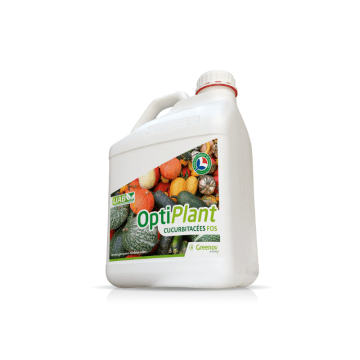Powdery mildew, blight and botrytis are the commonest diseases affecting tomatoes
A greenhouse alone is not enough to protect the plants against diseases and pests, which can cause significant damage.
Powdery mildew (oidium). Yellow spots can appear on the upper surface of the leaves, along with white down on the underneath. After turning yellow, the leaves dry up and fall off. These are all characteristic symptoms of Powdery mildew.To remedy these attacks, ventilate greenhouses to prevent too much heat building up. Make sure the plants have enough water and remove the lower leaves attacked by the disease. Boost growth using a nitrogen supplement. A nutritional deficiency exacerbates the development of the disease on the plant but does not affect the fruit.
Blight. Sometimes tomatoes present yellowish spots that quickly turn brown. The underneath of the leaves is coated with a white and greyish down that releases spores. The stalks affected blacken, causing the plant to die. These signs are all indicative of blight. To counter these effects, avoid too much nitrogen and water. Make sure tunnels are well ventilated. Then get rid of diseased plants. Regular removal of excess leaves, along with preventive chemical treatments, will help combat the risk of contamination. Take care to alternate the products used to avoid the development of any resistance.
Botrytis. This causes grey rot on the leaves and the development of brownish spots accompanied by a greyish down. Grey rot may also be observed on the fruits, with the flowers and fruits falling off. The easiest way to avoid botrytis is to choose resistant varieties, eliminating the risk of development of the disease. Otherwise, make sure that all sources of infection are reduced whenever the first signs of infection appear. Plant waste must therefore be destroyed and greenhouses adequately ventilated. It’s also important to avoid too much water and nitrogen. It is necessary to use chemical treatments preventively, alternating them with other products.
Integrated control in tomato production, a sustainable solution
So how do we preserve the environment and protect consumers from the harmful effects of excessive use of conventional fungicide solutions? How do we respect maximum residue limits in destination countries while at the same time allowing our local agriculture to develop internationally? Integrated control offers a long-term response to all these questions. This hybrid method consists in using all the methods available - both cultural and biological - to optimise crop disease and pest control. The objective: to generate the best agricultural practices and take advantage of all the resources required for the production of high-quality tomatoes.
Today, consumers expect products with superior organoleptic qualities: tomatoes with taste, flavour and a firm texture. Our experts can help you achieve these results. Don’t hesitate to contact them!




